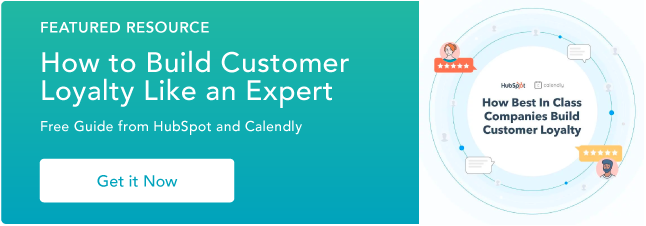[ad_1]
Loyalty.
It’s what you hope to get from your significant other, your beloved house pet, and your paying customers.
I’m no expert when it comes to the first two, but when it comes to customer loyalty, I have some insights to share that can help you grow your business.
(For more information about animal loyalty, please refer to the 1963 classic film, The Incredible Journey.)
Before we talk about loyalty programs, let’s examine how your company can attract loyal customers to your business.
Need a TL;DR directory? Here’s a table of contents.
How to Build Customer Loyalty
- Adopt a multi-channel customer service system.
- Provide exceptional service.
- Be consistent.
- Focus on the customer, not the competition.
- Build credibility through customer interactions.
- Deliver added value.
- Share positive customer experiences.
- Reward customer loyalty.
Customer loyalty is not earned easily. Customers are driven by their own goals and they’ll be loyal to the company that can help them fulfill those goals. It doesn’t matter if they have a positive history with your brand, if a competitor puts a better offer on the table then the customer is going to take it. The steps below can help your company stay ahead of the competition and build a following of loyal customers.
1. Adopt a multi-channel customer service system.
If you want to build customer loyalty, then you need to be in tune with your customers’ needs. Having a multi-channel service system is one of the best ways to connect with your customers, especially when they need help. Customers will have more access to your service team, creating more customer interactions. The more often you can interact with your customers, the more chances you’ll have to influence their experience.
Using multiple channels for customer service also presents the opportunity for an omni-channel experience. Omni-channel experiences occur when the user’s experience with the brand is consistent across channels, platforms, and devices. This increases customer satisfaction because it makes your customer service more accessible, and this is exactly what you want when your customers are frustrated and need support.
Consider adopting help desk and live chat tools that can help your customer service team cover multiple channels at once. For smaller teams, AI software like chatbots can relieve the workload of organizing and distributing incoming requests without having to hire more employees.
2. Provide exceptional customer service.
Going above and beyond customer expectations to provide exceptional service doesn’t mean giving away free products, discounts, and perks. In fact, it’s quite the opposite. Customers want solutions to their problems, not a free sample. Giveaways and discounts simply put a bandage on the problem.
Instead, challenge your team to listen to what the customer is saying and process the feedback. More often than not, your customer will be happier with the solution than they would be with a replacement or perk — although those can help sweeten the deal.
3. Focus on the customer, not the competition.
There’s a time and place to scope out competitors, but it’s not as beneficial as you might think when building customer loyalty. Mirroring what your competitors do to win over their customers won’t give you the same results that they have. In order to be the best in the eyes of your customers, you’ll need to know what your competitors do, then get even more creative than they are.
Big gains in customer loyalty are the sum of several small decisions. What that means is this: Your success isn’t riding on one major breakthrough. Every customer interaction, product purchase, and referral by a devout customer contributes to brand loyalty every single day.
So when you’re tempted to see if the grass is greener on the other side, just know it’s probably watered with a different sprinkler.
4. Be consistent.
The reason why franchises like McDonald’s and Chick-Fil-A are so successful is largely impacted by one thing — consistency. Customers know what they can expect from these businesses every time they go, no matter where they are in the country. On the surface, that doesn’t seem like a contributing factor toward customer loyalty but it is — here’s why.
When brands provide consistency through their products and service, their customers can easily incorporate them into their lives. For instance, imagine wanting ice cream, and all you can think about is your favorite dream cone from Chick-Fil-A. You can count on them to be open (unless it’s Sunday) and deliver exactly what you had in mind. After enough visits to Chick-Fil-A, you’ll begin to trust it because it’s proven time and time again that it can consistently deliver on its promise (and ice cream!).
5. Build credibility through meaningful customer interactions.
Research shows that about 90% of customers consider service as a factor in deciding whether or not to do business with a company. Additionally, 50% of customers say they would switch to a new brand after one bad experience. Every business makes mistakes. But if you want to retain customers, you’ll need to minimize those mistakes and correct them immediately when they happen.
Loyal customers expect a positive experience from your brand every time they interact with it. They want to feel like you value them as much — if not more — than they value you. If at any point they sense their business isn’t appreciated, you might lose them to competitors.
A CRM can come in handy here as it records the past experiences that a customer has with your brand. It stores messages like emails and calls, as well as customized notes that relay specific information about a customer. This creates a more personalized experience as employees can leverage important historical data regarding past interactions with a customer.
6. Deliver added value.
You’re not the only one vying for your customers’ attention — your competitors are too. Everyone is racing to show your customers that they can best fulfill their needs. So, how do you edge them out? Go above-and-beyond their expectations.
Statista Research shows that 61% of millennial consumers are willing to pay more for a guaranteed good experience. Other than offering a loyalty program — which we’ll talk about soon — you can do this by building a relationship with your customers that extends beyond the moment of purchase. Adding value beyond the purchase point demonstrates that you’re invested in the customer’s lifestyle, not just their money.
One way that your company can add value to the customer experience is to host events or contests that your target audience would be interested in. For example, the energy drink brand, Red Bull, has built a massive customer following by sponsoring extreme sporting events and teams.
Another way to add value is to create a customer community. This could be something simple like a knowledge base or ideas forum, or it could be complex and include a devout network of loyal advocates.
Take Harley Davidson, for example. It founded a community of brand evangelists who advocate for Harley Davidson at different dealerships throughout the U.S. These communities make customers feel like they’re part of an in-crowd that possesses a social status that’s exclusive to the members of the group.
7. Share positive customer experiences.
If you’re doing a good job with generating positive customer experiences, then why not let people know about them? Gather customer feedback and share your reviews to inform others about the benefits that your company can provide. Use your omni-channel communication system to broadcast these stories across a variety of mediums. Customers tend to trust other customers more than your advertising, so it’s important to leverage positive interactions to maximize customer value.
If you’re not sure where to find feedback, participate in third-party review sites like Yelp, which give you access to large amounts of customer feedback in one thread. Consider adopting NPS® and other feedback tools that help you gather qualitative information about your brand. You can also encourage customers to share testimonials which can then be uploaded on your website for other leads to see.
8. Reward your customers.
Customers who are loyal to your brand are also the most valuable to your business. In fact, studies show that customers who have an emotional connection to your brand tend to have a lifetime value that’s higher than your average customer. These customers spend more with your business and should be rewarded for it.
This is where a loyalty program becomes essential to building customer loyalty. Research shows that 68% of loyal customers will join a loyalty program if one is offered to them. Customers who join the program spend more at your business because they receive benefits in return for their business. They already enjoy buying from your company, so why not give them another reason to do so?
An easy retort to that question would be that it costs too much to offer incentives without getting anything directly in return. To be fair, this does appear to be true when you look at an individual purchase. However, loyalty programs offer benefits to your business that extend beyond just one or two transactions.
If you question whether they’re cost-effective, take a look at some of the key benefits that customer loyalty programs can provide to your business.
What Are the Benefits of a Customer Loyalty Program?
Once you’ve created your product or service and started generating revenue from your customers, you should consider building a customer loyalty program. No matter what your industry or business vertical, you can find a way to reward customers for their loyalty (and their hard-earned money) with additional, exclusive benefits.
You might already be a member of a few customer loyalty programs — for example, a frequent flier mile program, or a customer referral bonus program — but you might not know how to start one for your own organization.
In the increasingly competitive and crowded business space, customer loyalty programs could be what differentiates you from your competitors — and what keeps your customers around.
Members of customer loyalty programs are 75% more likely to make another purchase after receiving an incentive, but that’s not the only reason to start a program.
1. Better Customer Retention
Customer loyalty programs help you keep customers engaged with your business which indicates how likely they are to stick around, and how much they’re going to spend.
In this day and age, customers are making purchase decisions based on more than just the best price — they’re making buying decisions based on shared values, engagement, and the emotional connections with a brand. Customer loyalty programs are a great way to engage customers beyond just the point of purchase, to interface on shared values, and to provide even more value to customers — making them happier and more likely to keep purchasing from you.
2. More Customer Referrals
If your customers enjoy the benefits of your customer loyalty program, they’ll tell their friends and family about it — the single most trusted form of advertising. Referrals result in new customers that are free to acquire, and which can generate even more revenue for your business — because customers referred by loyalty members have a 26% higher retention rate.
3. Cost-Efficacy
It’s more cost-effective for your business to retain happy customers than it is to consistently churn and acquire new ones. Acquiring a new customer is 5-25X more expensive than retaining a current one.
4. User-Generated Content and Reviews
Online customer reviews are almost as trustworthy as recommendations from friends and family. Customer loyalty programs that incentivize reviews and ratings on websites and social media will result in authentic user-generated content from customers singing your praises so you don’t have to.
So, now that you’re on board with the value of customer loyalty programs, how do you get started with creating and launching one?
How to Create a Customer Loyalty Program
- Choose a great name.
- Create deeper meaning.
- Reward a variety of customer actions.
- Offer a variety of rewards.
- Make your ‘points’ valuable.
- Structure non-monetary rewards around your customers’ values.
- Provide multiple opportunities for customers to enroll.
- Explore partnerships to provide even more compelling offers.
- Make it a game.
1. Choose a great name.
The first step to rolling out a successful customer loyalty program is choosing a great name. The name of the program needs to incite curiosity and interest to urge customers to participate — and it needs to be distinguished from the myriad of other loyalty programs they are already a part of.
The name should go beyond explaining that the customer will get a discount, or will get rewards — it needs to make customers feel excited to be a part of it. 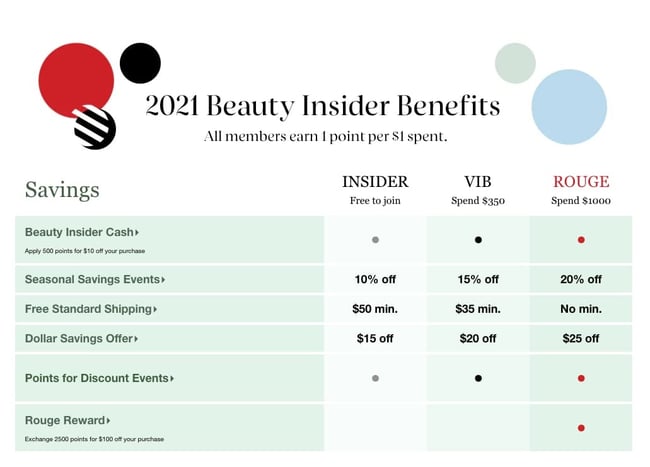
Some of my favorite customer loyalty program names include beauty brand Sephora’s Beauty INSIDER program and vegan supplement brand Vega’s Rad(ish) Rewards. These clever, unique names hint at benefits but don’t give them away — making customers curious to learn more and join.
2. Create a deeper meaning.
Some customers are cynical about customer loyalty programs and think they’re just a clever ploy to get them to spend more with businesses.
Even if that’s the goal of your customer loyalty program (because that’s the goal of most businesses), it’s your job to make it about more than just the money. Make it about the values to get your customers excited about it.
Tap into the “why” behind your product or service to make your customer loyalty program as compelling as possible.

Briogeo is a customizable hair care product line. With just a few answers to a quiz, customers will have a shampoo and conditioner crafted just for their hair on their doorstep. Its rewards program is just as customer-centric as its product. For every $1 customers spend, they earn three points toward a savings discount on their next purchase. With no frills or distractions, customers know that this loyalty program is getting them closer to even more affordable hair care products. It’s a win-win.
3. Reward a variety of customer actions.
Another way to demonstrate your commitment to customer loyalty beyond just purchases? Reward non-purchasing customer actions.
Customers watching product videos, engaging in your mobile app, sharing social media content, and subscribing to your blog are still valuable signs that a customer is engaging with your brand — so reward them for it.
4. Offer a variety of rewards.
Discounts aren’t the only way to Provide more value to your loyal customers.
For those who spend at a certain threshold or earn enough loyalty points could turn them in for free tickets to events and entertainment, free subscriptions to additional products and services, or even donations in their name to the charity of their choice.
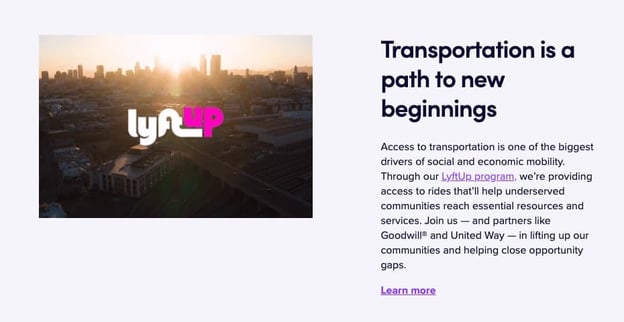
Lyft does a fantastic job of this with its LyftUp program. Riders can round up the cost of their ride to the next dollar and donate the change to the charitable organization of their choice — making it easy and rewarding for them to make an impact while using the service as they normally do.
5. Make “points” valuable.
If you’re asking customers to make the effort to enroll in your customer loyalty program, make it worth their while — points-wise. Just like with inbound marketing, if you’re asking for more of your customers’ money, you need to offer them something valuable in return to make sure the reward matches the effort expended.
For example, if you’re offering cashback rewards as part of your customer loyalty program, assign a monetary value to your points so customers can visualize what they can earn (and spend) by continuing to purchase from you.
Credit cards do an excellent job of this by illuminating dollar-for-dollar how points can be used — just watch any commercial offering points in exchange for dollars, airline miles, groceries, or gas.
6. Structure non-monetary benefits around your customers’ values.
Values are important to customers — in fact, two-thirds of customers are more willing to spend money with brands that take stances on social and political issues that they care about.
So, make sure you tap into those values as part of your rewards program, too.

TOMS Shoes donate a pair of shoes to a child in need for every purchase its customers make. Knowing that providing resources to the developing world is important to its customers, TOMS takes it a step further by launching new products that help other important causes — like animal welfare, maternal health, clean water access, and eye care — to get customers excited about helping in other ways.
7. Provide multiple opportunities for customers to enroll.
Once you’ve launched your customer loyalty program, make sure you’re promoting the benefits of joining.
If customers get rewards from purchasing from your online store, next to the price, share the points they could earn from spending that much.
You might have experienced this when flying on an airline that offers a loyalty rewards credit card. The flight attendants might announce that you could earn 30,000 miles toward your next flight — if you apply for the airline’s credit card.
Other ways to do this include promoting the program on social media channels and adding on-site push notifications when customers complete an activity that earns them points.
8. Explore partnerships to provide even more compelling offers.
What’s better than one reward? Two rewards, of course.
Co-branding rewards programs are a great way to expose your brand to new potential customers and to provide even more value to your existing, loyal ones.
Brands might offer loyal customers free access to co-branded partnerships — like T-Mobile’s offer of a Netflix subscription with the purchase of two or more phone lines.
9. Make it a game.
Everyone loves games and competition — so use that winning spirit to get your customers interacting with your brand more frequently.
Lots of brands gamify their customer loyalty programs to earn valuable engagements within an app, website, or at point-of-purchase.
Points are easily translatable for gamification. Take Treehouse, which teaches coding and app development, and rewards engaged users with more and more points leading up to a badge — which users can then display on their websites and social profiles to impress colleagues and potential employers with their skills.
If you’re operating with a growing business, you may not have much flexibility when it comes to your budget. However, you can still offer an attractive rewards program that fosters customer loyalty.
Customer Loyalty Programs for Small Business
- Punch Cards
- Opt-in Email
- Free Trials
- Partner Programs
- Referral Programs
- Points Systems
- Loyalty Discounts
While growing businesses don’t have the same financial influence that bigger companies have, these organizations can still create incentives that motivate customers to return to their stores. When developing their rewards program, smaller businesses need to be creative and come up with a unique system that mutually benefits both the company and the customer.
Take a look at a few common ways that growing companies leverage rewards programs to build customer loyalty.
1. Punch Cards
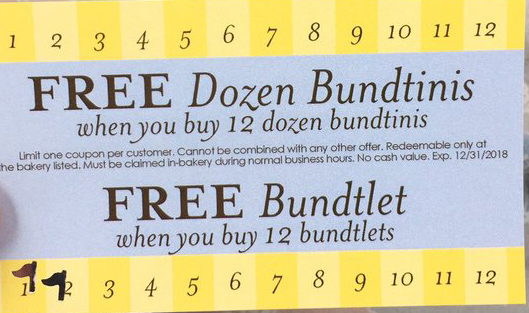
Punch cards are one of the most commonly used rewards programs for B2C companies. Customers receive a business card that gets a hole punched in it after every purchase they make. Once a customer reaches a certain number of holes, they receive a special perk or reward. The benefit of this system is that the business can guarantee that the customer will visit them a certain number of times before issuing a reward.
Nothing Bundt Cakes has a popular punch card loyalty program that offers customers a free personal cake when they buy 12 of them.
2. Opt-in Email
Opt-in email solicits the customer’s email address for communication with your brand. Once the customer opts in, your company can send them offers or promotions via email.
Emails are cheap to compose and distribute and can be sent at almost any frequency. You can also use email automation tools to deliver mass amounts of emails in an efficient manner.
3. Free Trials
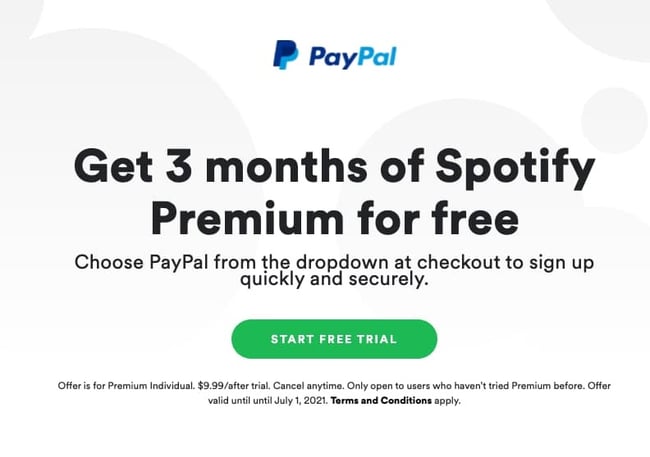
Free trials are typically thought of as incentives used to convert potential leads, but they can also be utilized in rewards programs as well. For example, say you have a new product or service that’s about to be launched. You can release a free-trial to members of your loyalty program. This not only acts as a reward for customer loyalty but it also works as a marketing tactic that primes your customers for a future sales call.
4. Partner Programs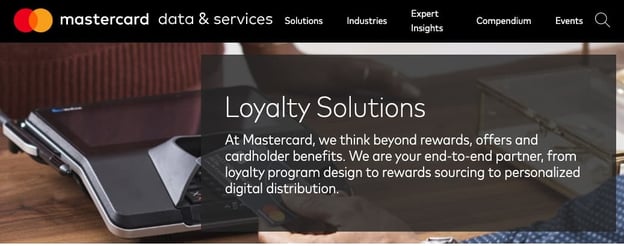
One way to add value is to look externally to businesses that you could potentially partner with. By combining your resources, you can create an offer that benefits both you, your partner, and your shared customers.
Credit card companies like Visa and MasterCard do this all the time by offering a card that’s sponsored by a specific brand. While having a credit giant on your side is nice, start by looking for local, non-competitive businesses that you can partner with to add more to your offer.
5. Referral Programs
Why track down new leads all by yourself when your customers can help do that for you?
You can incentivize loyal customers to become advocates by offering them an attractive reward for customer referrals. Research shows that 70% of consumers are more likely to recommend your brand if it has a good loyalty program. This means that if your offer is good enough, customers will be happy to take the time to network your business to other potential leads.
6. Points Systems
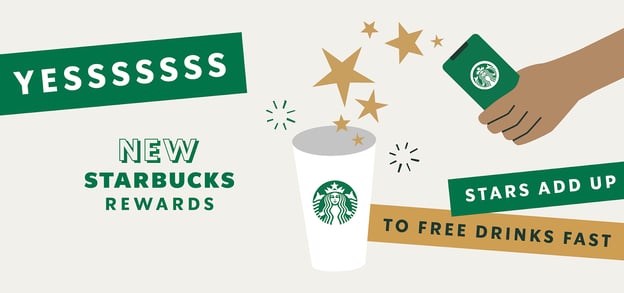
Tracking points is a tried and true method of tracking customer loyalty. The two keys to making these programs successful are a worthwhile incentive and a reasonable timeline to earn the incentive.
Customer loyalty programs that are point based find the sweet spot between the two so that customers don’t get frustrated and choose other businesses over yours. For example, if you sell a product like work out gear, this is something that people would purchase fairly often and there are a ton of different places they can choose from to get what they want. Your incentive would need to be valuable — like a free t-shirt — and the buyer would need to be able to earn it quickly enough to keep them striving toward it, but not so quickly that the reward loses value.
Assigning a point value per dollar is a smart way to find this balance, but you’ ll need to make sure it’s fair. If it takes 100 points to earn a free t-shirt that usually costs $20, a $10:100 point ratio may not be feasible for your profit margin while a $1:1 point ratio might discourage customers before they even sign up.
7. Loyalty Discounts

Loyalty discounts come with an added bonus to the traditional customer loyalty programs we’ve covered so far. These types of programs allow you to give back to the customer while also collecting data that can help you personalize their buying experience. Kroger’s Community Rewards program is a great example of loyalty discounts in action.
To employ this type of program, you’d offer consistent, predictable discounts to customers every time they display an identification marker that associates them with the program. This might be a QR code, a card, or even a phone number.
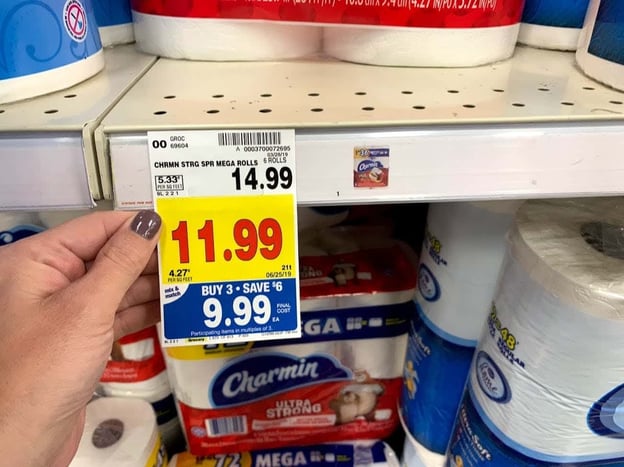
On the back end, your business captures data about what the customer purchased. Overtime, you’ll understand trends, patterns, and habits of your customers so you can improve their experience which, in turn, makes them even more brand loyal.
These types of programs are so strong because the incentive is consistent and predictable, which gives the customer a reason to come back again and again.
Start Your Customer Loyalty Program Today
To get started with building your customer loyalty program, you have to prioritize the customer experience first. A loyalty program won’ t magically solve all your customer’s issues — it’s simply a more interactive way to say “thank you, come again.” Once your customers trust you, they’ll be vying for the chance to earn rewards for doing business with your brand. After all, don’ t they deserve the royal treatment for being loyal customers?
Editor’s note: This post was originally published in July 2019 and has been updated for comprehensiveness.
[ad_2]
Source link


